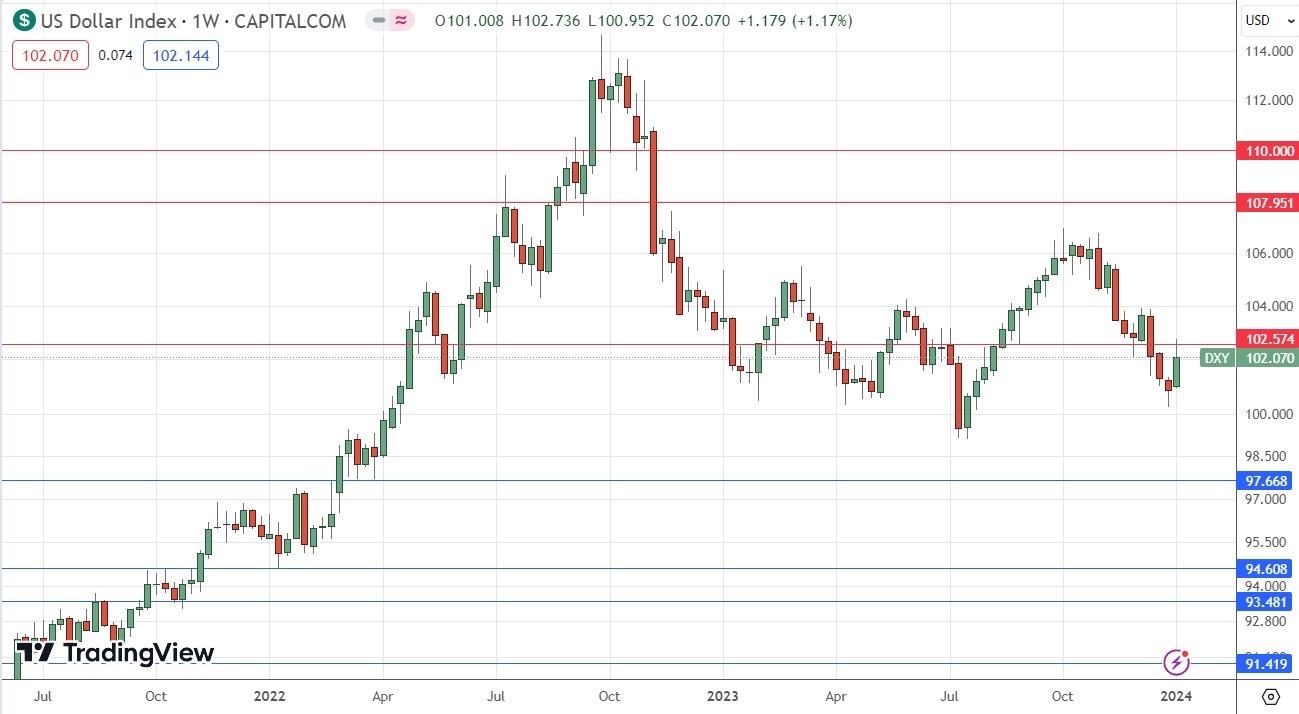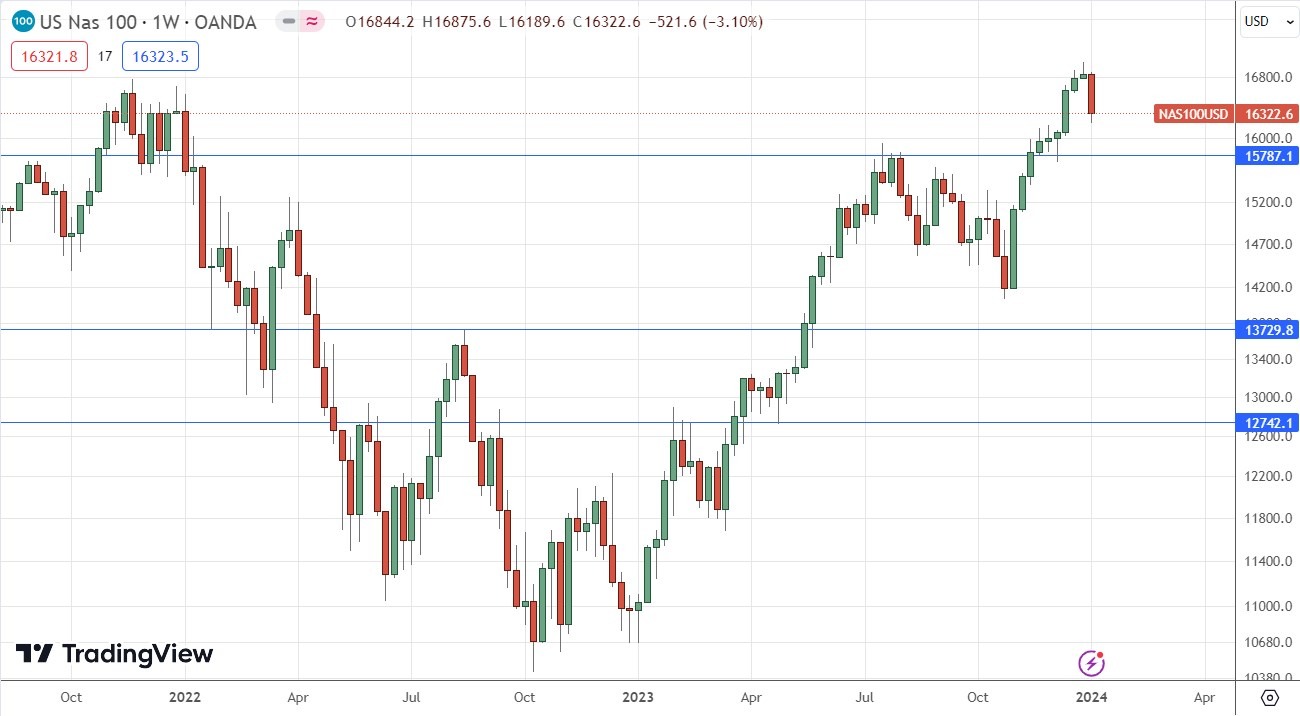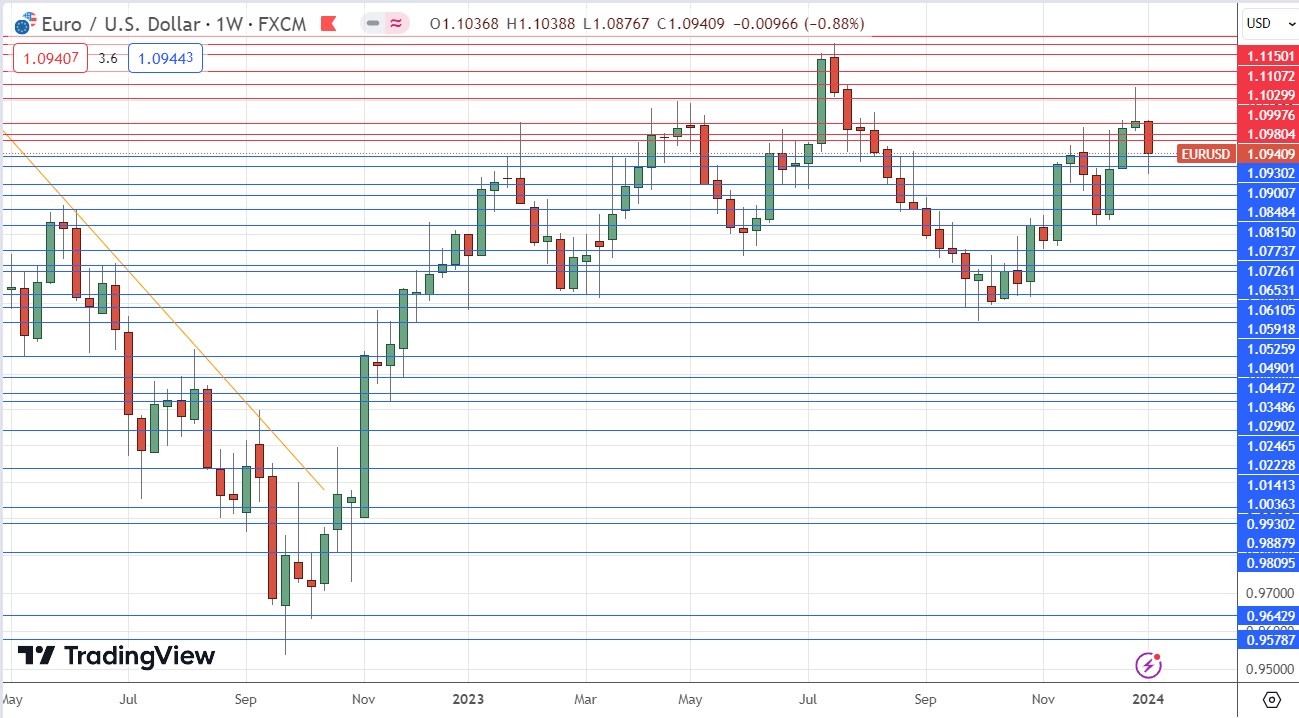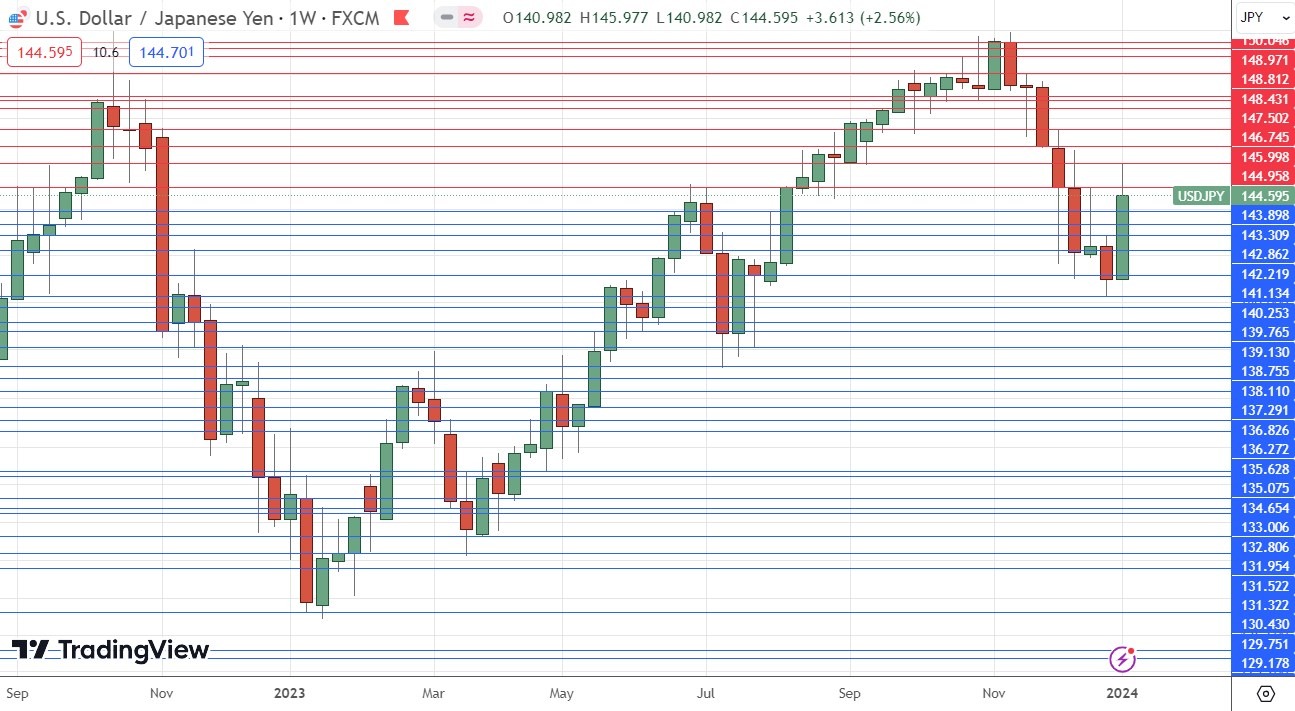Forex brokers we recommend in your area
See the full list of brokers
The difference between success and failure in Forex/CFD trading will likely depend on which assets you choose to trade each week and in which direction, rather than on the methods you may use to determine trade entries and exits.
When starting the week, it is a good idea to look at the big picture of what is developing in the market as a whole and how these developments are affected by macro fundamentals, technical factors and market sentiment.
Read on for my weekly analysis below.
I wrote in my previous article #1street January The best trading opportunities for the week are likely to be:
- Buy the EUR/USD currency pair. This fell by 0.88% over the week.
- Sell on the USD/JPY currency pair. This increased by 2.56% during the week.
This produced a total loss of 3.44% with an average loss of 1.77% per asset.
Last week was a notable week in the markets, with most of the week seeing a strong reversal of the previously prevalent risk-off trend that pushed the US dollar lower and supported equity markets. This appears to have been driven more by the start of a new calendar year, which often produces volatile or reversing markets, rather than any significant data release, although the FOMC minutes included language that it would not rush to cut interest rates, which would… may have contributed to this price movement. This strong counter-trend move saw a reversal at the start of the New York session on Friday, possibly influenced by stronger-than-expected US Nonfarm Payrolls and average earnings data (the latter up 0.4% m/m compared to 0.3%). percentage that was expected), although it would logically be expected to strengthen the US dollar rather than weaken it.
We may now see a resumption of the December risk appetite trend after Friday produced a new move in that direction.
Some other important economic data was released last week, mostly in the US:
- Job Opportunities in the US JOLTS – Almost as expected.
- US Services PMI – This was worse than expected.
- US ISM Manufacturing PMI data – almost as expected.
- US Unemployment Claims – This was slightly better than expected.
- Canadian Unemployment Rate – This was slightly better than expected.
These factors lifted major US stock market indexes to a ninth straight week of gains, and in the case of the technology-based Nasdaq 100 index, another all-time high near 17,000 points.
Next week in the markets is likely to see a higher level of volatility, as there will be the release of US inflation data, which is by far the most closely watched data in the market right now, especially as it relates to Forex. Keep in mind that the beginning of a new calendar year typically sees choppy, volatile markets and sudden changes in trend, making it difficult to predict price direction at this time of year.
The most important data to be released over the next week is the US Consumer Price Index (inflation) on Thursday, followed by the US Producer Price Index (PPI) data adjacent to inflation on Friday.
Other key economic data this week include:
- Swiss CPI (inflation)
- Australian Consumer Price Index (Inflation)
- The Governor of the Bank of England testifies before the British Parliament.
- UK GDP
- US unemployment claims
- China Consumer Price Index (Inflation)
Monday will be an official holiday in Japan.
The US Dollar Index formed a bullish candle last week, which closed higher. The weekly close was lower than 3 months ago but higher than 6 months ago, representing a mixed long-term trend.
Despite the bullish candle, it should be noted that there are several bearish factors:
- The weekly candlestick has a long upper wick.
- The upper wick of the weekly candle appears to have rejected a new major resistance level at 102.57.
- The recent price action has negated the previous major support level at 101.56.
- The US dollar gave up some of its gains at the end of last week, suggesting that short-term momentum may be with the dollar bears again.
For these reasons, I am once again ready to sell the US dollar again, but since we are still in the first half of January, it can be very difficult to predict the direction in the markets, so I am cautious.

After rising for nine straight weeks to hit a new all-time high, the Nasdaq 100 finally charted a bearish weekly candle. The decline over the past week was very strong, but looking at the price chart, we can see that there is nothing out of the ordinary about this decline. It was well in line with other recent weekly declines last October. We have a bull market in US stocks, and the Nasdaq 100 has historically been a great investment during bull markets. I think we are seeing a natural bearish bounce, provided the price does not settle below the support level at 15,787.
I think it is still wise to look for long trade entry points here, ideally at or near the bullish bounce at or near 15,787, or perhaps at more technical signals indicating a short-term bottom has been reached.
Long-term conditions remain supportive for a bull market, but the rally has become too extended after the recent strong rally.

After showing a candle that closed higher last week, but was clearly a bearish pin candle, the price unsurprisingly fell over the past week. However, this was due to broad strength in the US dollar rather than any real relative weakness in the euro, so we have seen a significant but still relatively modest decline over the past week.
The currency pair likes this trend, and with the long-term uptrend well established, the price making a breakout, and the short-term moving averages moving above the long-term moving averages, the long-term signals are bullish.
This is helped by the relative strength of the euro, which may get some momentum as the European Central Bank is seen as somewhat behind the curve on interest rate cuts from the US Federal Reserve, with the ECB not talking about a cut until the third quarter of 2017. 2024, while a rate cut is widely expected to be issued by the Fed in March 2024.
This currency pair likes to make deep bounces. This, combined with the fact that the price has held due to major support near the round figure at $1.0900, is a bullish signal. I see this area as potentially being very pivotal, so I will look to buy at support over the next week. Another bullish factor is the large lower wick in last week’s Japanese candlestick.

The USD/JPY pair made a strong upward move last week, after hitting a long-term low. The movement was strong, and the US dollar did not advance stronger against any currency other than the Japanese yen. The weakness of the yen has been a prominent feature in the forex market, due to the Bank of Japan’s admission that the effects of the recent tsunami will make it difficult for them to start moving away from their ultra-loose monetary policy even during the first half of 2024.
It is worth noting that the size of last week’s advance was more than 3 times the long-term average true range, which many trend traders may consider as evidence that the long-term downtrend is over.
I think day traders would be wise to look to this pair or other JPY pairs as there is a lot of volatility here, even if the trend is not certain. If the US dollar falters over the next week, it could be interesting to trade certain yen pairs longer.

I see the best trading opportunities this week as follows:
- Buy the EUR/USD currency pair.
Are you ready to trade our weekly forex analysis? We have prepared a list of the best Forex brokers that are worth using.